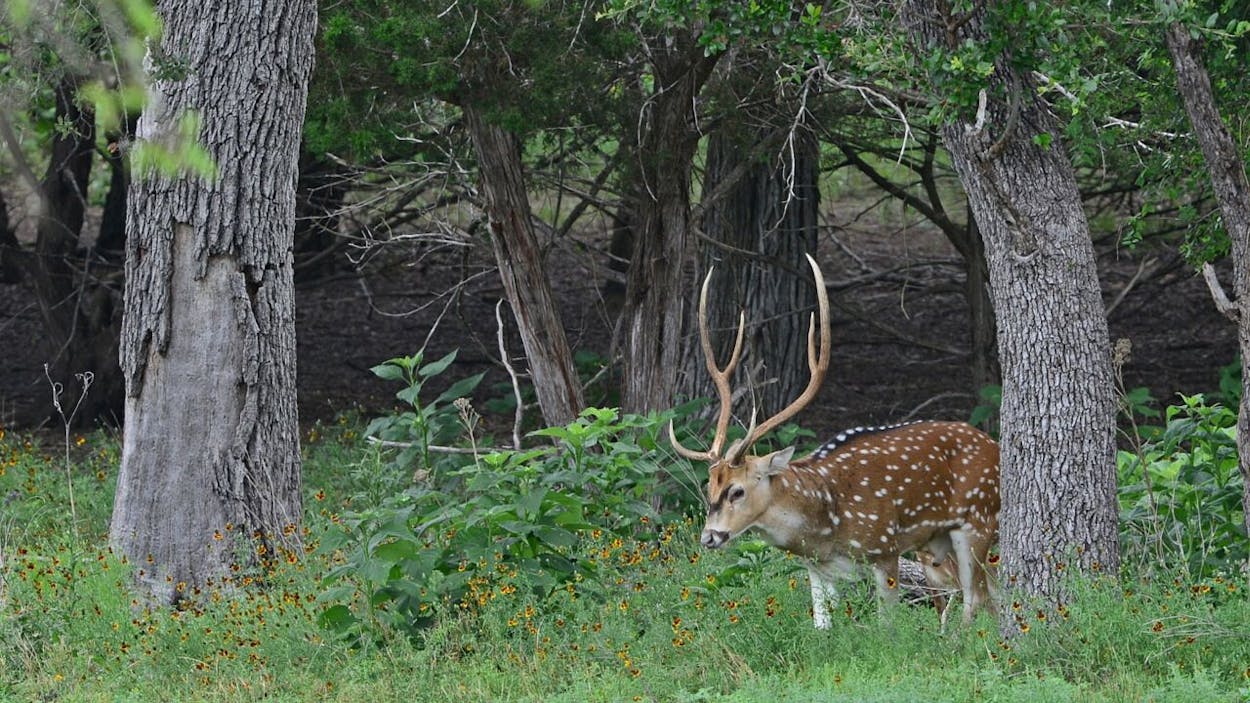In Texas, hunting is big business, bringing in more than $2.1 billion annually. But, more than that, it’s a pursuit as central to our state psyche as driving cattle and smoking meat. With the start of another deer season upon us, here’s a round-up of Texas Monthly’s best stories about our beloved state pastime.
Why We Hunt
“The Thrill of the Hunt” by Gary Cartwright
The woods are the one place he feels complete. “By definition,” he wrote in an unpublished essay, “successful hunters are inescapably conversant with the life’s final instant . . . they take comfort in the reality that a leaden bullet will salve, for [a] while, their primal atavistic drives.”
“Eat, Prey, Love” by Rick Bass
Hunting demands presence and attentiveness, makes life electric with possibility. Even as we age and lose the fire for killing and procuring—as if made weary by our relentless success—the habit of attentiveness continues. We observe the regularity of patterns, from the four seasons to the phases of the moon to the cycles of the deer in the fall breeding period, and everything in between. And yet the hunter’s eye stays ever watchful for the anomaly, the unpredictable bright spot amid the comfortable patterns of the familiar.
“Deer Prudence” by Michael Dileo
Deer hunting is a big deal all over Texas—last season some 420,000 whitetails were killed in the state—but in the brush country “buck fever” is truly a sickness. My wife’s mother, normally a paragon of social graces, will abandon any family gathering to pursue the eighteen-pointer she’s been tracking. All over Laredo people leave work early to head for their deer leases and blinds. The first question at Christmas parties isn’t, “What’d Santa bring you?” It’s, “Huntin’ much?” Or, more typically, “Seen anything?”
“Texas Monthly Hunting Guide” by John Jefferson – September 1973
Hunting is one of the most therapeutic strategic withdrawals available. Sitting on the side of a hill out in the Frio Canyon, a hunter can feel things falling back into the right places as it gets on toward 5 o’clock in the afternoon. It’s the autumn of another year in his life, and a good time to reflect.
How to Hunt
If you’ve never spied a buck in your crosshairs, it’s a good idea to sign up for one of the Texas Parks and Wildlife Department’s Hunter’s Ed courses (in fact, it’s a must if you were born on or after September 2, 1971, and don’t intend to be accompanied by someone who’s already licensed to hunt in Texas).
You’ll also want to bone up on these Hunting 101 lessons from Andrea Valdez, Texas Monthly‘s resident “How to Live Like a Texan” expert:
Newbies can take heart by reading Sonia Smith’s dispatch, “High on the Hog,” about her first aerial hog hunting excursion, and Sarah Bird’s “Hog Wild” essay on how to “hunt” without ever touching a gun.
Oh, and be sure to download the TPWD’s Outdoor Annual app to stay abreast of season dates, bag limits, and rules and regulations.
What to Hunt
Buck fever may be an epidemic among Texas hunters, but there are plenty of creatures other than the white-tailed deer worth the pursuit.
Squirrels
“The Least Dangerous Game” by Philipp Meyer
If you’re used to seeing squirrels at your bird feeder, the idea of hunting them doesn’t sound too challenging. But the difference between a yard squirrel and a woodland squirrel is like the difference between the deer that stands in your driveway eating your tulips and the skittish white-tailed buck that won’t let you come within a mile. Wild squirrels, wild deer—they stay alive by avoiding predators. You don’t sneak up on them by accident.
Feral hogs
“Whole Hog” by Philipp Meyer
Like many creatures of the night, they roam in packs, long-toothed and short-tempered, willing to eat nearly anything, including their young. Picture a smellier version of the zombie hordes from George Romero’s Night of the Living Dead, running 30 miles an hour and not particularly caring whether they eat your brains or your leg.
Gators
“Swamp Thing” by John Morthland
There is something woozily surreal about watching an alligator that weighs more than one hundred pounds being hoisted over the purple hyacinth and into the boat against a hazy, dusk-hour backdrop of the lit-up Port Arthur refineries.
Ducks
“The Wading Game” by John Jefferson
“A good day for ducks” is more than just an inclement weather cliché; it’s actually what duck hunters hope for. The hunting takes specialized skill, too, especially blowing a duck call, termed the world’s greatest conservation tool since on the wrong mouth—it can scare away more ducks than it calls into shooting range.
White-winged doves
“On the Wings of a Dove” by Gary Cartwright
David Lipscomb, a young biologist doing graduate work in wildlife science at Texas A&M, explained, “The dove is the most difficult winged animal to shoot. You use an inexpensive, low-velocity shell, and it takes a good amount of preparation for the hunt. The thrill is not in the kill but the anticipation, the preparation. If you could go ‘bang’ and the bird would light up red, that would be fine.”
(See also, this great gallery of photos from Time of a Rio Grande Valley dove hunt in 1961.)
Post-Hunt Delicacies
Last, but not least, a few recipes to transform your quarry into a delectable dinner:
- Hot fried birds (dove)
- Carter Smith’s jalapeño dove poppers
- Chile-stuffed quail with chipotle cream sauce
- Grilled venison loin with horseradish cream
- More About:
- Hunting







